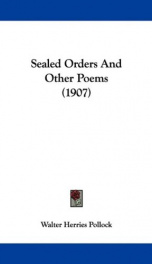amateur theatricals

Purchase of this book includes free trial access to www.million-books.com where you can read more than a million books for free. This is an OCR edition with typos. Excerpt from book: CHAPTER IV. STAGE DIRECTIONS textit{(continued). T has already been said that in our opinion the less scenery is used the better things will go in an ordinary amateur performance, for we are not of course now concerned with those performances which are got up by accomplished amateurs with as much pains and expense as professional representations, and the artistic result of which, in some cases, repays the trouble given to them. In the case of many plays suitable for private theatricals, a simple arrangement of screens will, as has been said, be enough to keep up the desired illus:on. But it may be well to give some hints as to what can be done in the way of scenery for a programme which demands either a change of scene or a scene arranged with some elaboration. Let us suppose in the first instance that two short plays are to be performed, that the scene of both is laid inside a house, but that the first is a " costume piece," the action of which ' passes in an old mansion, and that the second is a modern comedietta or farce, the scene of which is to be a modern drawing-room or lodging-house. If there is no objection to incurring as much trouble and expense as would be involved in hiring a portable theatre, and at the same time producing a better effect, this can be done by getting a decorator or a clever carpenter to build up a wooden framework running round three sides of the room, and containing the necessary openings for such doors and windows as the action of the two pieces requires. This framework should be covered with the kind of paper suitable for the scene of the second and modern piece, and this papering should again be hung over with drapery, tapestry if possible, for the scene of the first and " costume" piece. The pictures hung on the wall, and the o...
Info about the book
Author:
Series:
Unknown
ASIN:
B00CPSRC06
Rating:
5/5 (5)Your rating:
0/5
Languge:
English
Users who have this book
Users who want this book
What readers are saying
What do you think? Write your own comment on this book!
write a commentGenre
if you like amateur theatricals try:
Do you want to exchange books? It’s EASY!
Get registered and find other users who want to give their favourite books to good hands!





